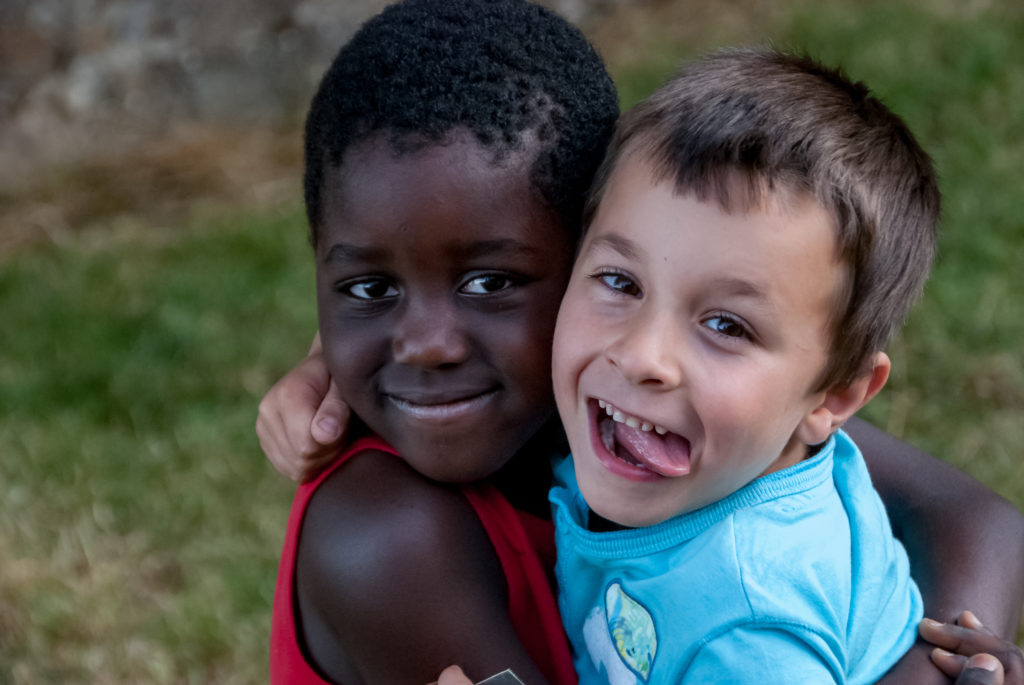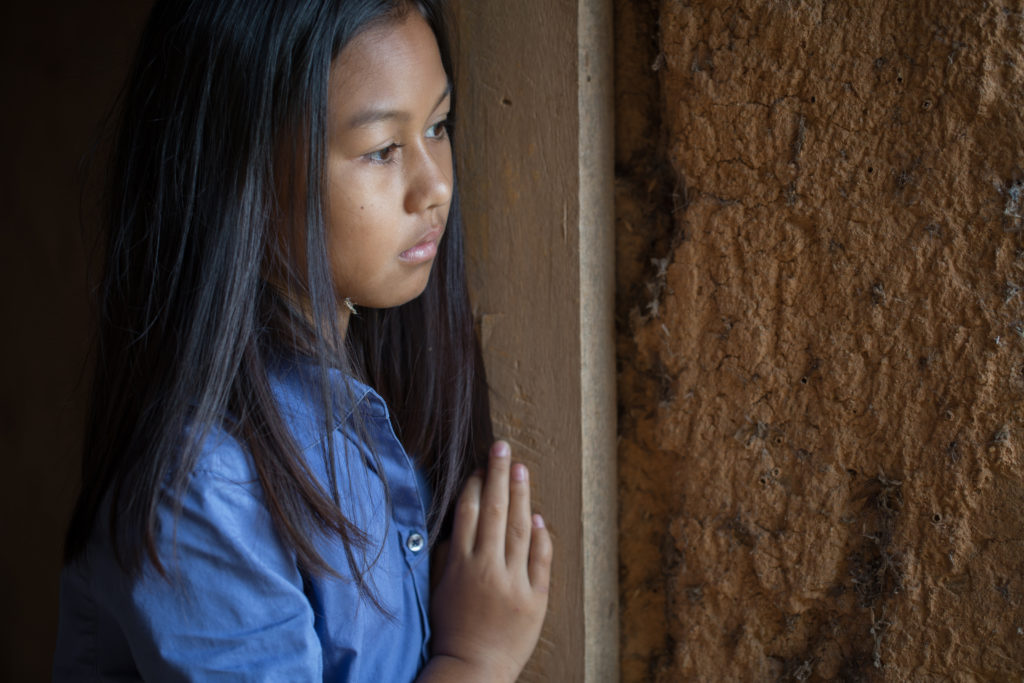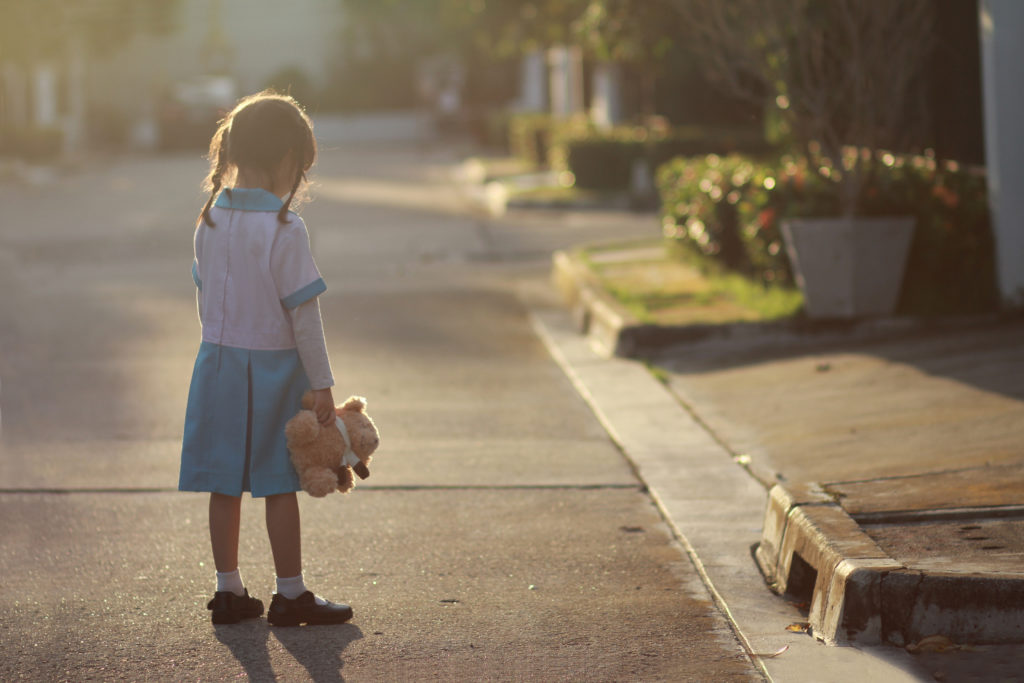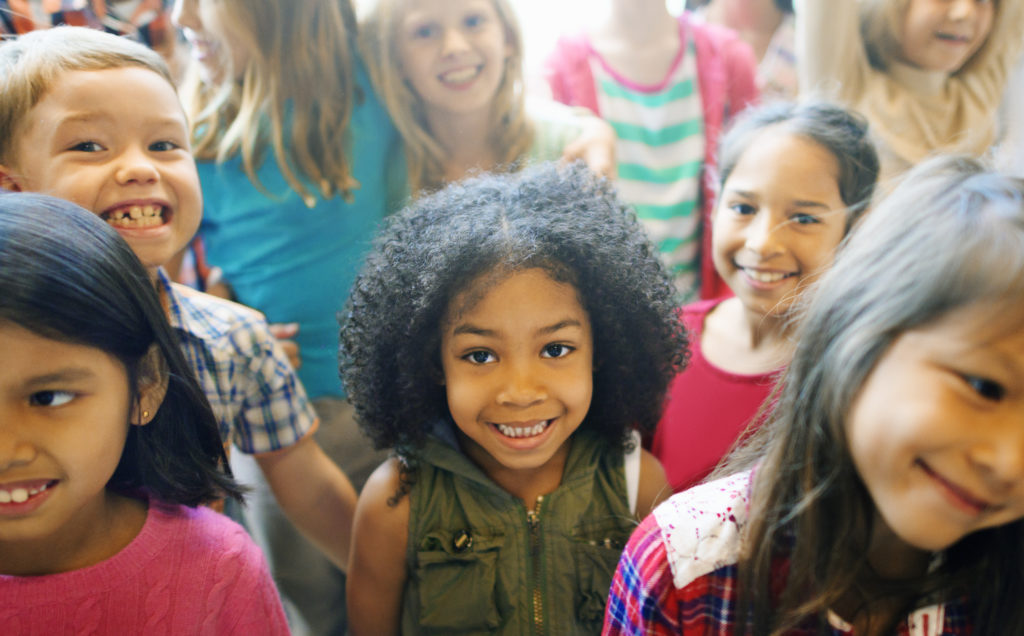The right to non-discrimination is a complex and vital right at the cornerstone of the realization of human rights, and The International Convention on the Rights of the Child is pillared by its ideals. While all children should be treated, protected, and cared for equally, in today’s world, many children remain victims of discrimination.

The definition of ‘discrimination’
Discrimination is largely rooted in fear, often of a group that looks, speaks, thinks, or behaves differently, or of an ethnic group threatening the security and cultural identity of another (Save the Children, 2014).
There are different definitions of discrimination. According to the Council of Europe, discrimination is the unequal treatment of different categories of people when this treatment cannot be justified based on objective and reasonable criteria (Europe, 2023). The Council of Europe allows for some types of differentiation in treatment, but prohibits any such differentiation that would not be based on an objective and reasonable ground. For instances, a discriminatory measure targeting children of a certain ethnic background in order to prevent them from accessing services such as education would be prohibited.
The UN Human Rights Committee defines it as “any distinction, exclusion, restriction or preference which is based on any ground such as race, color, sex, language, religion, political or other opinion, national or social origin, property, birth or other status, and which has the purpose or effect of nullifying or impairing the recognition, enjoyment or exercise by all persons, on equal footing, of all rights and freedoms” (UN Human Rights Committee, 1989).
The concept of discrimination comprises three key dimensions: (1) treating a child differently, (2) when doing so has the purpose or effect of impairing or harming them, and (3) the differentiation is based on a prohibited ground (Lansdown, 2022). Therefore, the prohibited component is not necessarily the act of discrimination itself to treat someone differently. Instead, the prohibited feature is the aim the discriminatory act pursues, the intent behind the discriminatory act. The prohibited intent is the purpose or effect of nullifying or impairing the recognition, enjoyment or exercise on equal footing of a right.
Forms of discrimination
Discrimination can be both direct and indirect. Direct discrimination describes the specific differential treatment of a person to his/her disadvantage based on their characteristics as compared to another person in the same situation. Indirect discrimination happens when an equal or so-called neutral treatment affects different groups of people significantly differently.
Discriminatory acts can target children, or groups of children, based on a wide range of criteria. The most common criteria are: gender identity, gender expression, sex, sexual orientation, ethnicity, caste, descent or inherited status, age, class, disability, health status, race, language, religion, political or other opinion, national, ethnic or social origin, property, disability, birth or other status.
In an attempt to reference all the criteria on which children are being discriminated against, the UN Committee on the Rights of the Child has identified a long list of groups as commonly subjected to discrimination, which include girls, abandoned children, children affected by natural disasters, institutionalized children, ethnic minority children placed in alternative care and children affected by HIV/AIDS. Specifically for children, the discriminatory criteria are not necessarily applied directly to the child but to the parents, guardians, friends, or family. It would, for instance, be the case when a child is discriminated against because of the sexual orientation of his or her parents.

In different parts of the globe, groups of children can be more prone to discrimination. For instances in Europe, children with disabilities, LGBTQ+ children, and Roma children are particularly at risk of discrimination (Europe, 2023). In other regions, children particularly at risk of being discriminated against can be girls, children from religious or ethnic minorities, children in rural areas, children who are refugees or asylum seekers, as well as children deprived of liberty, etc.
The global effect of discrimination on children
Discrimination leads to exclusion and can significantly impact society. The reasons for which children are discriminated against in their childhood persist and remain well into their adulthood. This long-lasting exclusion and discrimination can stem from grievance and xenophobia, and have devastating consequences on the lives of victims (UNICEF, 2022).
There can be as many types of consequences of discrimination as there can be ways to discriminate against. The effects of discrimination can be long or short term and have implications from the smallest scale (one individual) to entire societies.
For simplification purposes, the effects of discrimination on the individual level are twofold: objective and subjective. Objectively, discrimination can prevent or limit access or enjoyment of one’s rights. For instance, it is well established that in the US, people of color receive unequal treatment when they engage in health care or education systems where they have lesser access to high-quality education (Harvard Center, s.d.).
Discrimination may also lead to missed opportunities for children and young adults, maintaining the inequality gap between social classes. Subjectively, being the victim of discrimination can cause children to have negative perceptions of their ethnicity, race, culture, appearance, gender or sexual orientation, or any trait or characteristic used to discriminate them.
Additionally, research has shown that victims of discrimination are more likely to experience higher levels of depression, anxiety, and other adverse mental health outcomes (Wellbeing, 2020). Discrimination among children has also been linked to bullying, which affects a child’s mental well-being and development and can have a lasting harmful impact throughout the child’s adult life.

Discrimination also triggers larger-scale effects and consequences and not only does it affect the life of the victims, but when inserted in a pattern, it can become systemic. Systemic discrimination involves the procedures, routines and organizational culture of any organization that, often without intent, contribute to less favorable outcomes for minority groups than the majority of the population, from the organization’s policies, programs, employment and services (Council of Europe, Systemic Discrimination, s.d.).
Finally, in its most extreme forms, discrimination can lead to physical violence. Based on their origins, clothing, sexual orientation, gender, religion, etc., children and young adults have often physically suffered from discriminatory acts, often referred to as “hate crimes”. The fear and anger that often gravitate around discrimination, at a larger scale, have devastating consequences for entire groups of individuals.
In its most extreme form, discrimination can be linked to armed conflicts. Indeed, often, armed conflict can directly be linked to hatred and extraordinary discrimination (the Shoah, the Rwandan Genocide, the Armenian Genocide to name only a few).
The universal status of the right of children to nondiscrimination
The UN Convention on the Rights of the Child is based on four general principles: non-discrimination, best interest of the child, right to life, survival and development, and the right to be heard. As such, the right of children to non-discrimination is the first pillar to the realization of the rights of all children.
Article 2 of the CRC reads as follows: “1. State Parties shall respect and ensure the rights set forth in the present Convention to each child within their jurisdiction without discrimination of any kind, irrespective of the child’s or his or her parent’s or legal guardian’s race, color, sex, language, religion, political or other opinion, national, ethnic or social origin, property, disability, birth or other status. 2. State parties shall take appropriate measures to ensure that the child is protected against all forms of discrimination or punishment on the basis of the status, activities, expressed opinions, or beliefs of the child’s parents, legal guardians of family members” (Convention on the Rights of the Child, 1989).
Therefore, Article 2 is both a substantive and a procedural right that must be applied to realize all other rights. Several obligations for State parties arise from this article. First, it introduces an obligation on States to ‘respect and ensure’ the rights in the CRC, imposing on States to refrain from any action that would limit or impair any of the rights contained in the Convention (Lansdown, 2022).
‘Respect and ensure’ also has a positive component, requiring States to take all necessary measures to enable the child to enjoy their rights. Second, Article 2 imposes an obligation to every child “within the jurisdiction”, regardless of their status (citizen, visitor, children of migrant workers, undocumented children, etc.) (Convention on the Rights of the Child, 1989).
Frameworks for protection against discrimination at different levels
At the international level, some types of discrimination have been considered to be so problematic and recurrent that the international community developed specific international tools to fight them such as, the UN Convention against Discrimination in Education (1960), the UN Convention on the Rights of Persons with Disabilities (2006), the International Convention on the Elimination of all forms of Racial Discriminations (1966), the Framework Convention for the Protection of National Minorities (1998).
At the regional level, the Council of Europe, through Article 14 of the European Convention on Human Rights, guarantees that the enjoyment of all rights contained in the Convention shall be secured without discrimination on any ground. More specifically focused on children, the Council of Europe Strategy for the Rights of the Child attributes special care to discriminated and marginalized groups of children (Europe, 2023).
Several EU directives prohibit discrimination in the welfare system and access to goods and services, which, although not directly mentioning children, are all relevant to children (for instance, the Racial Equality Directive 2000/43/EC) (Council of Europe, Handbook on European law relating to the rights of the child, 2022).
Other regional instruments have similar provisions directly protecting children against discrimination. For instance, Article 3 of the African Charter on the Rights and Welfare of the Child provides that “Every child shall be entitled to the enjoyment of the rights and freedoms recognized and guaranteed in this Charter irrespective of the child’s or his/her parents’ or legal guardians’ race, ethnic group, color, sex, language, religion, political or other opinion, national and social origin, fortune, birth or other status” (African Charter on the Rights and Welfare of the Child, 1990).
In the past decades, to implement international and regional treaties and tackle specific types of discrimination, there has been a rise in national anti-discrimination laws. For instance, one can note the 2000’s South Africa’s promotion of the Equality and Prevention of Unfair Discrimination Act, or the 2010 UK Equality Act.
Effectively implementing the right of children to nondiscrimination in the future

Nondiscrimination does not mean equality in treatment, the same way that nondiscrimination does not mean that all types of discrimination are prohibited. Indeed, positive discrimination can be a tool to ensure that a child can adequately and fully participate in life in society. For instance, the Council of Europe, when promoting complete belonging to society for children with disabilities, promotes “positive action programs” in parallel to other responses (Council of Europe, Recommendation CM/REC (2013) 2 of the Committee of Ministers to Member States on ensuring full inclusion of children and young persons with disabilities into society, 2013).
In addition to the legal tools available, discrimination is fought with social and humane tools. Education is a critical component in the fight against discriminatory practices and beliefs. In the same trajectory, awareness programs and campaigns play a key role in sensitizing individuals to the struggles and hardships that different people might face.
In that aspect, young people have increasingly engaged in these programs, primarily through social media, engaging with youths all around the globe and sharing their stories. According to UNICEF, on average, at least nine in ten people in young generations agree that treating minorities equally is important (Unicef, 2022).
Civil society organizations play a key role in the fight against discrimination and gathering data.
The work of civil society focuses on three pillars:
(1) Direct actions on violations of children’s rights and gaps in provision;
(2) Strengthening the capacity of duty-bearers to meet their obligations (policies, practice and legislation), and;
(3) Strengthening the understanding and capacity of children, their guardians and civil society to claim rights and hold others accountable (Save the Children, 2014). These organizations are important as they give a voice to affected communities (children) and bridge the gap between them and decision makers.
Written by Léa Allix
Internally proofread by Aditi Partha
Last updated on 6 June 2023
Bibliography:
Council of Europe. (2013, October 16). Recommendation CM/REC (2013) 2 of the Committee of Ministers to Member States on ensuring full inclusion of children and young persons with disabilities into society. Retrieved from https://search.coe.int/cm/Pages/result_details.aspx?ObjectID=09000016805c75de
Council of Europe. (2022). Handbook on European law relating to the rights of the child. Retrieved from https://fra.europa.eu/sites/default/files/fra_uploads/fra-coe-2022-handbook-child-rights_en.pdf
Council of Europe. (n.d.). Systemic Discrimination. Retrieved May 10, 2023, from https://www.coe.int/en/web/interculturalcities/systemic-discrimination
Europe, C. o. (2023, May 26). Children in vulnerable situations. Retrieved from https://www.coe.int/en/web/children/anti-discrimination
Harvard Center, o. t. (n.d.). How Racism can affect child developement. Retrieved May 12, 2023, from https://harvardcenter.wpenginepowered.com/wp-content/uploads/2020/11/RacismInfographic_2020.pdf
Lansdown, G. (2022). Article 2: The Right to Non-Discrimination. Monitoring State complicant with the UN Convention on the Rights of the Child, pp. 11-19. Retrieved from https://link.springer.com/chapter/10.1007/978-3-030-84647-3_2
Save the Children. (2014). Making it Equal: a guide to non-discrimination. Retrieved May 02, 2023, from https://docs.google.com/viewerng/viewer?url=https://dylbw5db8047o.cloudfront.net/uploads/making20it20equal_web.pdf
UN Human Rights Committee. (1989, November 21). CCPR General Comment No 18 (1989) non-discrimination, CCPR/C/21/Rev.1/Add1. Retrieved from https://digitallibrary.un.org/record/84170?ln=en
Unicef. (2022). Rights Denied- The impact of discrimination on children. Retrieved May 21, 2022, from https://www.unicef.org/media/130801/file/rights-denied-discrimination-children-EN.pdf
Wellbeing, C. a. (2020, July 23). Experience of discrimination. Retrieved May 26, 2023, from https://www.childyouthwellbeing.govt.nz: https://www.childyouthwellbeing.govt.nz/measuring-success/indicators/experience-discrimination#:~:text=Experiencing%20discrimination%20can%20cause%20children,and%20other%20negative%20health%20outcomes.

